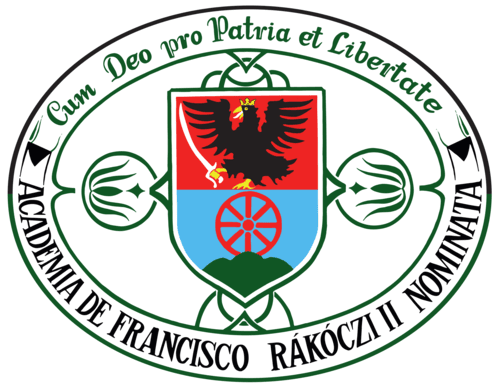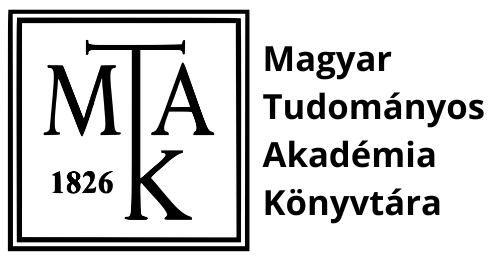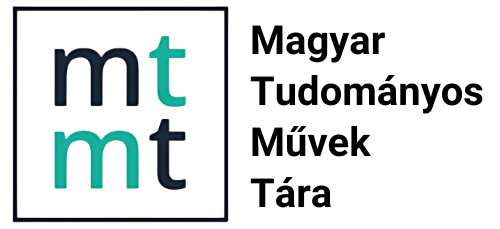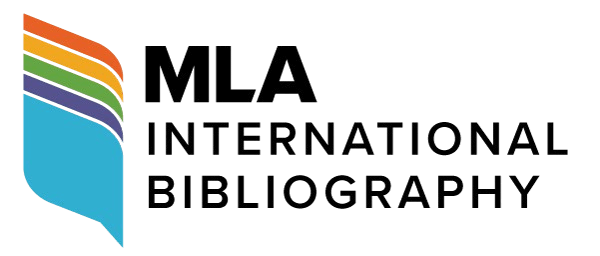Az angol és a német nyelv többközpontúsága négy nyelvkönyvsorozatban
DOI:
https://doi.org/10.58423/2786-6726/2022-2-180-218Kulcsszavak:
angol, német, idegen nyelv, többközpontúság, tankönyvekAbsztrakt
Jelen tanulmány egy komplex kutatási projekt része, amely a szociolingvisztika és a nyelvpedagógia határterületén mozogva vizsgálja azt a kérdést, hogy milyen szerepet tölt be az angol és a német nyelv többközpontúsága a magyar oktatási rendszerben. Ezen belül a tanulmány fókuszában olyan tankönyvcsaládok állnak, amelyek széles körben használatosak és piacvezető szerepet töltenek be Magyarországon, mind a közoktatás, mind pedig a felső-, ill. a felnőttoktatás terén. E két nyelv többközpontúságának nemzetközi szakirodalma igen kiterjedt, ezen belül pedig egyre intenzívebb figyelem irányul annak nyelvoktatásban betöltött szerepére. A tanulmány alapját képező komparatív vizsgálat négy (két angol és két német) tankönyvcsaládot elemez, melyek a magyarországi tankönyvpiacon vezető pozíciót töltenek be, és a nyelvtudásszintek teljes skáláját lefedik, a Közös Európai Referenciakeret A1-től C1 szintjéig. Így összesen 20 teljes kötet (tankönyv, munkafüzet, ill. kiegészítő és hanganyagok) képezik részét az elemzésnek.
A vonatkozó szakirodalom ajánlásai alapján, melyek a többközpontúság megjelenítését elsősorban a receptív készségek terén tartják indokoltnak, jelen tanulmány három területen vizsgálja a többközpontúság nyelvkönyvekben való megjelenítését: (1) a szókincs, (2) az olvasott szövegértés, ill. (3) a hallott szövegértés terén. A tanulmány elsődleges célja általános tendenciák megállapítása, de ezek illusztrálására konkrét példák is elemzésre kerülnek.
A vizsgálat legalapvetőbb tanulsága, hogy a többközpontúság – az eddigi kutatási eredményekkel összhangban – meglehetősen marginális szerepet kap a vizsgált tankönyvcsaládokban. Vannak azonban szisztematikus különbségek az egyes kiadók gondozásában megjelent tankönyvcsaládok között, ami arra utal, hogy megfelelő elméleti háttér és a nyelvi variabilitásra irányuló nyitottság megléte esetén igenis lehetséges a többközpontú tartalmakat hangsúlyosabban beépíteni ezekbe az anyagokba.
Bár a többközpontúságból adódó különbségek a nyelv minden szintjén megnyilvánulnak, a vizsgált tankönyvcsaládokban mégis szinte kizárólag szókincsbeli eltérések kerülnek elő, néhány esetben kiegészülve a kiejtés szabályosságaival. Ez nemcsak a direkt módon a szókincs fejlesztésére irányuló tartalmak, hanem az olvasott, ill. a hallott szövegértés fejlesztését célzó szövegek esetében is igaz. A tanulmány a vizsgált tankönyvcsaládokban előforduló többközpontú tartalmak tematikus eloszlására is kitér, ahol főleg a német esetében mutatkoznak jelentős anomáliák, méghozzá a kulináris specialitásokkal foglalkozó témák erőteljes felülreprezentálásával. Pozitív eredményként említhető, hogy azonos kiadó régebbi kiadványait vizsgáló korábbi kutatások eredményeivel összevetve nagyobb hangsúlyt kap a többközpontúság a ma használatos anyagokban, ami bizakodásra adhat okot.
E kutatás relevanciáját, ill. gyakorlati hasznát az adja, hogy a vizsgált tankönyvcsaládok tudományos elemzése alapján megfogalmazott kritika fényében konkrét, tudományosan megalapozott javaslatokat állít a tankönyvkiadók és tananyagfejlesztők elé, amelyek megvalósításával közelebb hozható egymáshoz a nyelvoktatás és a valós nyelvhasználat, ezzel pedig sikeresebbé tehető a nyelvtanulás folyamata is.
Hivatkozások
Alptekin, Cem, 2002. Towards intercultural communicative competence in ELT. ELT Journal, 56/1: pp. 57–64.
Ammon, Ulrich, 1995. Die deutsche Sprache in Deutschland, Österreich und der Schweiz: Das Problem der nationalen Varietäten [The German language in Germany, Austria and Switzerland: The problem of national varieties]. Berlin: De Gruyter. (In German). https://doi.org/10.1515/9783110872170
Ammon, Ulrich, 2005. Pluricentric and divided languages. In: Ammon, Ulrich – Norbert Dittmar – Klaus Jürgen Mattheier – Peter Trudgill eds. Sociolinguistics: An international handbook of the science of language and society. Berlin–New York: De Gruyter. pp. 1536–1543.
Ammon, Ulrich, 2019. The Position of the German Language in the World. Abingdon – New York: Routledge. https://doi.org/10.4324/9781315157870
Ammon, Ulrich – Sara Hägi, 2005. Nationale und regionale Unterschiede im Standarddeutschen und ihre Bedeutung für Deutsch als Fremdsprache [National and regional differences in standard German and their meaning in teaching German as a foreign language]. Deutsch revital: Pädagogische Zeitschrift für das ungarndeutsche Bildungswesen [German revitalized: Pedagogical Journal for German Education in Hungary]. 2005/2: pp. 27–39. (In German).
Auerbach, Elsa Roberts, 1995. The politics of the ESL classroom: Issues of power in pedagogical choices. In: Tollefson, James. W. ed. Power and inequality in language education. New York: Cambridge University Press. pp. 9–33.
Bettermann, Rainer, 2010. D-A-CH-Konzept [D-A-CH Concept]. In: Barkowski, Hans & Krumm, Hans-Jürgen eds. Fachlexikon Deutsch als Fremd- und Zweitsprache [Lexicon of German as a Foreign and Second Language]. Tübingen – Basel: Francke. p. 41.
Boss, Bettina, 2005. Plurizentrischer DaF-Unterricht, aber wie? Die Sprache der Deutschschweiz in drei Lehrwerken für die Grundstufe [Pluricentric German language teaching, but how?]. Info DaF [Info German as a Foreign Language], 32/6: pp. 546–555. (In German).
Christen, Helen – Elisabeth Knipf-Komlósi, 2002. Falle, Klinke oder Schnalle? Falle, Klinke und Schnalle! Informationen, Meinungen, Forderungen aus der Sektion „Deutsch als plurizentrische Sprache” [Falle, Klinke or Schnalle? Falle, Klinke and Schnalle! Information, opinions, expectations from the section ’German as a pluricentric language’]. In: Clalüna, Monika – Günther Schneider eds. Mehrsprachigkeit und Deutschunterricht [Multilingualism and German education]. Rom: Bulletin Vals-Asla. pp. 13–19. (In German).
Cillia de, Rudolf, 2009. Deutsch als plurizentrische Sprache und DaF/DaZ-Unterricht [German as a pluricentric language and teaching German as a foreign or second language]. In: Koskensalo, Annikki – John Smeds – Rudolf de Cillia eds. Sprache als kulturelle Herausforderung [Language as a cultural challenge]. Berlin: LIT-Verlag. pp. 119–139. (In German).
Clyne, Michael ed. 1992. Pluricentric languages: Differing norms in different nations. The Hague: Mouton de Gruyter. https://doi.org/10.1515/9783110888140
Cook, Vivian, 1999. Going beyond the native speaker in language teaching. TESOL Quarterly, 33/2: pp. 185–209.
Crystal, David, 2008. Two thousand million? Updates on the statistics of English. English Today, 93/24: pp. 3–6. https://doi.org/10.1017/S0266078408000023
Dollinger, Stefan, 2019a. Debunking “pluri-areality”: On the pluricentric perspective of national varieties. Journal of Linguistic Geography, 2019/7: pp. 98–112. https://doi.org/10.1017/jlg.2019.9
Dollinger, Stefan, 2019b. The pluricentricity debate: On Austrian German and other Germanic standard varieties. New York: Routledge.
https://doi.org/10.4324/9780429031496
Eichinger, Ludwig M., 2006. Das Deutsche als plurizentrische Sprache betrachtet [German as a pluricentric language]. In: EFNIL Annual Conference. Madrid. (In German).
http://www.efnil.org/conferences/archives/madrid-2006/papers/06-EFNIL-Madrid-Eichinger-NewVersion.pdf/view (letöltés ideje: 2022. 03. 21.)
Elspaß, Stephan – Christa Dürscheid – Arne Ziegler, 2017. Zur grammatischen Pluriarealität der deutschen Gebrauchsstandards – oder: Über die Grenzen des Plurizentrizitätsbegriffs [On the grammatical pluriareality of the German colloquial standard – or: On the limits of the pluricentricity concept]. Zeitschrift für deutsche Philologie [Journal fro German Philology]. 149/136: pp. 69–91. (In German).
Európa Tanács [Council of Europe], 2002. Közös Európai Refernciakeret [Common European Framework of Reference]. Strasbourg: Nyelvpolitikai Program, Közoktatási Bizottság Élő Nyelvek Osztálya [Language Policy Programme, Education Policy Division, Modern Languages Department]. (In Hungarian).
Glaboniat, Manuela – Martin Müller – Paul Rusch – Helen Schmitz – Lukas Wertenschlag, 2002. Profile Deutsch [Profiles German]. Gemeinsamer europäischer Referenzrahmen [Common European Framework of Reference]. Stuttgart: Langenscheidt. (In German).
Glauninger, Manfred Michael, 2001. Österreichisches Deutsch [Austrian German]. Deutschunterricht für Ungarn [German Education for Hungary], 14/1–2: pp. 107–108. (In German).
Glauninger, Manfred Michael, 2013. Deutsch im 21. Jahrhundert: »pluri«-, »supra«- oder »postnational«? [German in the 21st century: »pluri«-, »supra«- oder »postnational«?]. In: Fiala-Fürst, Ingeborg – Jürgen Joachimsthaler – Walter Schmitz eds. Mitteleuropa: Kontakte und Kontroversen [Central Europe: Contacts and controversies]. Dresden: Thelem. pp. 459–468. (In German).
Hanashiro, Kazu, 2016. How globalism is represented in English textbooks in Japan. Hawaii Pacific University TESOL Working Paper Series, 14: pp. 2–13.
Hägi, Sara, 2006. Nationale Varietäten im Unterricht Deutsch als Fremdsprache: Duisburger Arbeiten zur Sprach- und Kulturwissenschaft 64 [National varieties in teaching German as a foreign language: Duisburg Articles in Linguistics and Cultural Studies 64]. Frankfurt am Main: Peter Lang. (In German).
Heindrichs, Wilfried – Friedrich Wilhelm Gester – Heinrich P. Kelz, 1980. Sprachlehrforschung: Angewandte Linguistik und Fremdsprachendidaktik [Language education research: Applied linguistics and foreign language teaching methodology]. Stuttgart: Kohlhammer. (In German).
Hensel, Sonja N., 2000. Welches Deutsch sollen wir lehren? Über den Umgang mit einer plurizentrischen Sprache im DaF-Unterricht [Which German should we teach? Dealing with a pluricentric language in teaching German as a pluricentric language]. Zielsprache Deutsch [Target Language German], 1: pp. 31–39. (In German).
Herrgen, Joachim, 2015. Entnationalisierung des Standards: Eine perzeptionslinguistische Untersuchung zur deutschen Standardsprache in Deutschland, Österreich und der Schweiz [Denationalizing the standard: A perceptional linguistic investigation about the German standard language in Germany, Austria and Switzerland]. In: Lenz, Alexandra N. – Timo Ahlers – Manfred Michael Glauninger eds. Dimensionen des Deutschen in Österreich: Variation und Varietäten im sozialen Kontext [Dimensions of German in Austria: Variation and varieties in a social context]. Frankfurt am Main: Peter Lang. pp. 139–164. (In German). https://doi.org/10.14220/9783737003377.139
Huber, Máté Imre, 2021. Plurizentrik in DaF-Lehrwerken: Zwei Lehrwerkreihen im Vergleich [Pluricentricity in German coursebooks: Two coursebook series in comparison]. In: Csernicskó, István – Kozmács István eds. Kétnyelvűség - oktatás - nyelvmenedzselés: Írások, tanulmányok Vančo Ildikó születésnapjára [Bilinguialism – education – language management: Writings, studies for Ildikó Vančo’s birthday]. Nyitra: Nyitrai Konstantin Filozófus Egyetem. pp. 113–127. (In German).
Huber, Máté Imre, 2022. A nyelvi többközpontúság elméletének szerepe a nyelvoktatásban az angol és a német példáján [The role of pluricentric theory in language education on the example of English and German]. Modern Nyelvoktatás [Modern Language Education]. 2022/1–2: 18–35. o. (In Hungarian). https://doi.org/10.51139/monye.2022.1-2.18.35
Jarzabek, Alina Dorota, 2013. Der plurizentrische Ansatz und das DACH-Prinzip in polnischen DaF-Lehrwerken [The pluricentric approach and the DACH principle in Polish coursebooks of German as a foreign language]. In: Bartoszewicz, Iwona – Marek Halub – Tomasz Maliszek eds. Germanica Wratislaviensia 138: Auswertung und Neubewertung [Germanica Wratislaviensia 138: Evaluation and Reassessment]. Wroclaw: Acta Universitatis Wratislaviensis. pp. 173–183. (In German).
Jenkins, Jennifer, 2006. Current perspectives on teaching World Englishes and English as a Lingua Franca. TESOL Quarterly, 40/1: pp. 157–181.
https://doi.org/10.2307/40264515
Jianli, Liang, 2015. Pluricentric Views towards English and Implications for ELT in China. English Language Teaching. 8/4: pp. 90–96.
https://doi.org/10.5539/elt.v8n4p90
Kachru, Braj Bihari, 1992. World Englishes: Approaches, issues and resources. Language Teaching: 25/25: pp. 1–14.
https://doi.org/10.1017/S0261444800006583
Kloss, Heinz, 1978. Die Entwicklung neuer germanischer Kultursprachen seit 1800 [The development of new Germanic cultural languages since 1800]. Düsseldorf: Schwann. (In German).
Knipf-Komlósi, Elisabeth, 2001. Die Rolle der Variation in der deutschen Gegenwartssprache im Sprachunterricht [The role of variation in the contemporary German language in language education]. In: Canisius, Péter – Gerner Zsuzsanna – Manfred Michael Glauninger eds. Sprache – Kultur – Identität [Language – Culture – Identity]. Pécs: Edition Praesens. pp. 181–189. (In German).
Kramsch, Claire, 1993. Context and culture in language teaching. Oxford: Oxford University Press.
Kramsch, Claire, 1995. The privilege of the non-native speaker. Plenary address at the Annual TESOL Convention. April. Long Beach, California.
Krumm, Hans-Jürgen, 1994. Stockholmer Kriterienkatalog [The Stockholm Catalogue of Criteria]. In: Kest, Bernd – Gerhard Neuner eds. Zur Analyse, Begutachtung und Entwicklung von Lehrwerken für den fremdsprachlichen Deutschunterricht [On the analysis, reviewing and development of coursebooks for teaching German as a foreign language]. Berlin: Langenscheidt. pp. 100–105. (In German).
Lanstyák, István, 1996. Gondolatok a nyelvek többközpontúságáról (különös tekintettel a magyar nyelv Kárpát-medencei sorsára) [Thoughts ont he pluricentricity of languages (especially with respect to the fate of Hungarian in the Carpathian Basin]. Új Forrás [New Source], 28/6: 25–38. o. (In Hungarian).
Lehtonen, Piia, 2020. Standardvarietäten in Finnischen DaF-und EFL-Lehrwerken: Ein Vergleich zwischen Deutsch-Lehrwerken und Englisch-Lehrwerken [Standard varieties in Finnish coursebooks of German and English as foreign languages: A comparison of German and English coursebooks]. Magisterarbeit, Universität Jyväskylä [MA thesis, University of Jyväskylä]. (In German).
Maijala, Minna, 2009. Zur sprachlichen und kulturellen Variation im Unterricht Deutsch als Fremdsprache: Überlegungen anhand einer Studie von finnischen DaF-Lehrwerken [On linguistic and cultural variation in teaching German as a foreign language: Considerations on the basis of a study about Finnish coursebooks of German as a foreign language]. In: Koskensalo, Annikki – John Smeds – Rudolf de Cillia eds. Sprache als kulturelle Herausforderung [Language as a cultural challenge]. Berlin: LIT-Verlag. pp. 249–276. (In German).
Marlina, Roby, 2014. The pedagogy of English as an International Language (EIL): More reflections and dialogues. In: Marlina, Ruby – Ram Ashish Giri eds. The pedagogy of English as an International Language. New York City: Springer. pp. 1–19. https://doi.org/10.1007/978-3-319-06127-6_1
Marlina, Roby, 2018. Teaching English as an International Language: Implementing, reviewing, and re-envisioning World Englishes in language education. Abingdon: Routledge. https://doi.org/10.4324/9781315315768
Matsuda, Aya, 2002. International understanding through teaching world Englishes. World Englishes, 21/3: pp. 436–440.
Matsuda, Aya, 2003. Incorporating World Englishes in teaching English as an international language. TESOL Quarterly, 37/4: pp. 719–729.
Medgyes, Péter, 1992. Native or non-native: Who’s worth more? ELT Journal, 46/4: pp. 340–349.
Motschenbacher, Heiko, 2019. Non‐nativeness as a dimension of inclusion: A multimodal representational analysis of EFL textbooks. International Journal of Applied Linguistics, 29/3: pp. 285–307. https://doi.org/10.1111/ijal.12237
Muhr, Rudolf, 1993. Österreichisch – Bundesdeutsch – Schweizerisch: Zur Didaktik des Deutschen als plurizentrische Sprache [Austrian – Germany German – Swiss: On the didactics of German as a pluricentric language]. In: Muhr, Rudolf ed. Internationale Arbeiten zum österreichischen Deutsch und seinen nachbarsprachlichen Bezügen [International studies on Austrian German and its relations with its neighbouring countries]. Wien: Hölder-Pichler-Tempsky. pp. 108–123. (In German).
Muhr, Rudolf, 1996a. Das Deutsche als plurizentrische Sprache: Zur Sprachrealität der deutschsprachigen Länder und zum Normbegriff im DaF-Unterricht [German as a pluricentric language: On the linguistic reality of the German-speaking countries, and on the norm concept in teaching German as a foreign language]. Unterrichtspraxis / Teaching German: Zeitschrift des amerikanischen Deutschlehrerverbandes [Unterrichtspraxis / Teaching German: Journal of the American Association of German Teachers], 1/2: pp. 137–146. (In German). https://doi.org/10.2307/3531823
Muhr, Rudolf, 1996b. Österreichisches Deutsch und interkulturelle Kommunikation im Kontext des Faches Deutsch als Fremdsprache [Austrian German and intercultural communication in the context of German as a foreign language]. ÖDaF Mitteilungen: Informationen des Vereins „Österreichischer Lehrerverband Deutsch als Fremdsprache” [ÖDaF News: Accounts of the Association of Austrian Teachers of German as a Foreign Language], 1/1: pp. 31–44. (In German).
Muhr, Rudolf, 1997. Norm und Sprachvariation im Deutschen: Das Konzept "Deutsch als plurizentrische Sprache" und seine Auswirkungen auf Sprachbeschreibung und Sprachunterricht DaF [Norm and language variation in German: The concept of German as a pluricentric language and its influences on language description and teaching German as a foreign language]. Germanistische Linguistik, 28/137–138: pp. 179–203. (In German).
Muhr, Rudolf, 2003. Language change via satellite: The influence of German television broadcasting on Austrian German. Journal of Historical Pragmatics, 4/1: pp. 103–127. https://doi.org/10.1075/jhp.4.1.06muh
Muhr, Rudolf ed. 2005. Standardvariationen und Sprachideologien in verschiedenen Sprachkulturen der Welt [Standard variaties and language ideologies in different language cultures of the world]. Frankfurt am Main: Peter Lang.
Muhr, Rudolf, 2012. Linguistic dominance and non-dominance in pluricentric languages: A typology. In: Muhr, Rudolf ed. Non-dominant varieties of pluricentric languages: Getting the picture. Frankfurt am Main: Peter Lang. pp. 23–48. https://doi.org/10.3726/978-3-653-01621-5
Neuland, Eva, 2011. Variation in der deutschen Sprache: Auswirkungen auf den (Fremd)Sprach(en)unterricht [Variation in the German language: Influences on (foreign) language education. In: Moraldo, Sandro ed. Deutsch aktuell 2: Tendenzen der deutschen Gegenwartssprache [German currently 2: Tendencies of the contemporary German language]. Rom: Carocci. pp. 48–63. (In German).
Neuner, Gerhard, 1994. Lehrwerkforschung – Lehrwerkkritik [Textbook research – textbook critique]. In: Kast, Berndt – Gerhard Neuner ed. Zur Analyse, Begutachtung und Entwicklung von Lehrwerken für den fremdsprachlichen Deutschunterricht [On the analysis, reviewing and development of coursebooks for teaching German as a foreign language]. Berlin: Langenscheidt. pp. 8–22. (In German).
Neuner, Gehard, 2007. Lehrwerke [Coursebooks]. In: Bausch, Karl-Richard – Herbert Christ – Hanj-Jürgen Krumm eds. Handbuch Fremdsprachenunterricht [The handbook of foreign language teaching]. 5. Auflage [5th edition]. Tübingen: Narr Francke Attempto Verlag. pp. 399–402.
Niehaus, Konstantin, 2015. Areale Variation in der Syntax des Standarddeutschen: Ergebnisse zum Sprachgebrauch und zur Frage Plurizentrik vs. Pluriarealität [Areal variation in the syntax of stadard German: Results on language use and ont he question of pluricentricity vs. pluriareality]. Zeitschrift für Dialektologie und Linguistik [Journal of Dialectology and Linguistics], 82/2: pp. 133–168.
Rauer, Agnes – Elena Tizzano, 2019. Teaching English with a pluricentric approach: A compilation of four upper secondary teachers’ beliefs. Unpublished MA thesis. University of Malmö, Faculty of Education and Society, Department of Culture, Languages and Media.
Sadker, David – Myra Sadker, 2001. Gender bias: From colonial America to today’s classrooms. In: Banks, James A. – Cherry A. McGee Banks eds. Multicultural education: Issues and perspectives, 4th edition. New York: John Wiley and Sons. pp. 125–151.
Schneider, Edgar W., 2011. English around the world. Cambridge: Cambridge University Press.
Seidlhofer, Barbara, 2009. Common ground and different realities: World Englishes and English as a lingua franca. World Englishes, 28/2: pp. 236–245.
Sherman, John Eric, 2010. Uncovering Cultural Bias in EFL Textbooks. Issues in Applied Linguistics, 18/1: pp. 27–53.
Su, Ya-Chen, 2016. The international status of English for intercultural understanding in Taiwan's high school EFL textbooks. Asia Pacific Journal of Education, 36/3: pp. 390–408.
Syrbe, Mona – Rose, Heath, 2018. An evaluation of the global orientation of English textbooks in Germany. Innovation in Language Learning and Teaching, 12/2: pp. 152–163.
Tajeddin, Zia – Pakzadian, Maryam, 2020. Representation of inner, outer and expanding circle varieties and cultures in global ELT textbooks. Asian-Pacific Journal of Second and Foreign Language Education, 5/10: pp. 1–15. https://doi.org/10.1186/s40862-020-00089-9
Takahashi, Reiko, 2014. An analysis of ELF-oriented features in ELT coursebooks. English Today, 30/1: pp. 28–34. https://doi.org/10.1017/S0266078413000539
Tomlinson, Brian – Masuhara, Hitomi, 2013. Adult coursebooks. ELT Journal, 67/2: pp. 233–249. https://doi.org/10.1093/elt/cct007
Vettorel, Paola, 2018. ELF and communication strategies: Are they taken into account in ELT materials? RELC Journal, 49/1: pp. 58–73.
Wollmann, Jana, 2019. Nationale Variation des Standarddeutschen: Lexikalische Varianten im DaF-Unterricht und in DaF-Lehrwerken [National variation of standard German: Lexical variants in teaching German as a foreign language and in coursebooks of German as a foreign language]. Magisterarbeit [MA thesis], Ludwig-Maximilians-Universität München.
Yamanaka, Nobuko, 2006. An evaluation of English textbooks in Japan from the viewpoint of nations in the inner, outer, and expanding circles. JALT Journal, 28/1: pp. 57–76.
URL 1: https://www.englishprofile.org/ (letöltés ideje: 2022. 03. 21.)
Downloads
Megjelent
Hogyan kell idézni
Folyóirat szám
Rovat
License
A szerzők megtartják a szerzői jogokat, és a folyóiratnak adják az első közlés jogát. A közlemény a Creative Commons 4.0 Nemzetközi Licenc (CC BY 4.0) feltételei szerint kerül közzétételre, amely lehetővé teszi mások számára annak megosztását és terjesztését, feltéve, hogy megfelelően hivatkoznak a szerző(k)re és a tanulmány vagy recenzió első megjelenésére ebben a folyóiratban.

















